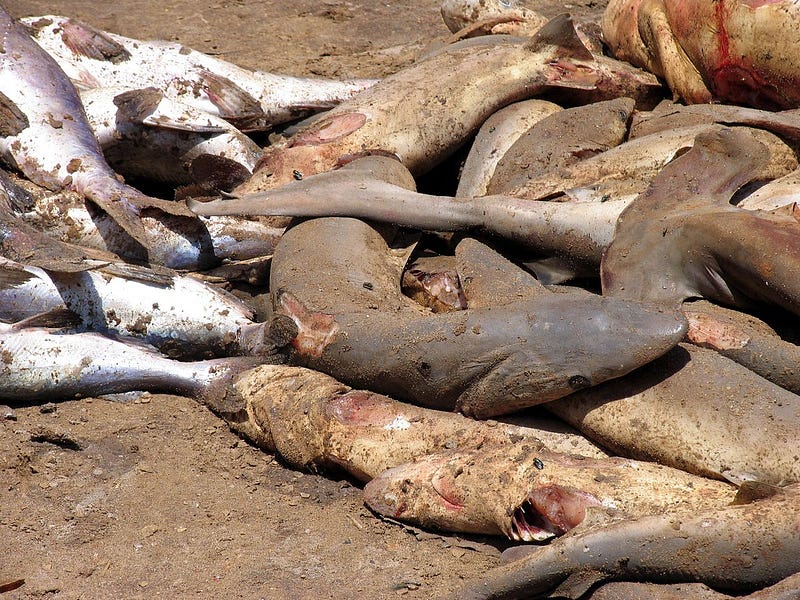The Silent Slaughter of Sharks: 80 Million Killed for Fins
Written on
Chapter 1: The Stark Reality of Shark Fishing
Recent statistics indicate a troubling rise in shark fishing, primarily driven by the demand for their fins. Human activity has led to an increase of 4 million sharks killed annually since 2012.

Almost everyone remembers the classic movie “Jaws,” directed by Steven Spielberg. The chilling music and scenes of the shark still evoke fear, as they depict the predatory nature of these creatures. However, it's crucial to understand that incidents involving shark attacks on humans are quite rare.
How many people do sharks actually kill?
The reality is that unprovoked shark attacks average about 70 each year, resulting in roughly 10 fatalities. This statistic positions sharks as far less dangerous than other animals, such as lions. Interestingly, hippos pose a greater threat, taking the lives of around 500 people annually.
These figures highlight a critical point: while encounters with sharks can be fatal, they are exceedingly uncommon. Despite being labeled as man-eaters, the real danger lies in human actions, as we kill an estimated 80 million sharks every year solely for their fins—4 million more than the levels recorded before 2012.

Canadian researchers conducted an analysis of fishing data from 2012 to 2019, revealing a notable escalation in fishing activities. Alarmingly, over 30% of all shark species are now classified as endangered. This significant finding was published in the renowned scientific journal “Science.”
In their article, the researchers noted: “Over the past two decades, sharks have increasingly been recognized as one of the most threatened groups of wildlife globally. Despite discussions on enhancing protective measures for these creatures, no comprehensive evaluation of the impact of such regulations on global shark mortality has been undertaken.”
The study revealed a 4% increase in shark mortality in coastal regions, contrasted by a 7% decrease in pelagic fishing, particularly in the Atlantic and western Pacific. The scientists stated, “By integrating fishing mortality data with the global regulatory framework, we demonstrate that extensive legislation aimed at curtailing overfishing has not effectively reduced shark mortality.”

The researchers concluded that while regional restrictions on shark fishing have shown some effectiveness, more comprehensive strategies are necessary to mitigate the excessive exploitation of sharks. They emphasized the urgent need to protect around 25 million endangered sharks captured annually.
Shark fins are primarily targeted for consumption, particularly in countries such as China, Hong Kong, Taiwan, Malaysia, Singapore, and Thailand, where they are viewed as a delicacy. The gruesome process of finning often involves removing fins from live sharks, which are then discarded back into the ocean to suffer and die slowly.

Activists have long advocated for an end to this brutal practice. Unfortunately, data from WWF indicates that the surge in shark fishing is tied to the increasing value of shark meat, with the global market for shark and ray products estimated to reach up to $2.6 billion, a steep rise from $157 million in 2000.
Experts stress that profound systemic changes are essential, addressing not only the meat trade but also the sale of souvenirs like shark teeth and bones found in local markets across Asia. Conservationists warn that sharks are vital for maintaining the health of marine ecosystems.
Chapter 2: Caffeine and Its Effects
Attention all readers!
As content creators on Medium.com, we receive minimal compensation for our efforts. If you appreciate my work, please consider supporting me on my “Buy Me a Coffee” page. Your contributions can significantly aid my passion for producing quality content. Thank you for your support!

